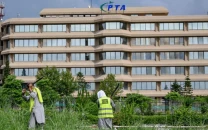The migrant worker flow
Remittances from migrant workers are a significant element of the Pakistan economy

The migrant worker flow
In 2016, the number of Pakistani workers recruited by Saudi employers dropped by a substantial number — down 11 per cent to 460,000 and this despite the fact that Saudi Arabia remains the busiest corridor for Pakistani workers than in any year since 2005. Bangladesh has largely replaced Pakistan as the primary source of external labour, according to the Asian Development Bank, probably because the ban on recruiting was relaxed in the middle of 2016. Pakistan is unlikely to regain primacy.
The reasons for this are complex but the ‘Saudisation’ policy introduced in 2011 is the foundation. Despite this Saudi Arabia remains the top destination for migrant workers from the subcontinent but for many Europe and especially Germany are now the principal target. The grass is always greener on the other side of the hill, and certainly for Pakistanis, in the absence of jobs for poorly-skilled and educated males Saudi Arabia is attractive. But with oil prices settled to lower levels than of two years ago and Saudi Arabia investing heavily in solar power, the market for Pakistani labour is contracting. This can only mean that remittances are going to fall, and remittances from migrant workers are a significant element of the Pakistan economy. The money is spent on health, food, education and in rural areas improved sanitation and accommodation. It is the cushion on which the government sits and life is going to get significantly harder if the cushion fades away.
Published in The Express Tribune, April 4th, 2018.
Like Opinion & Editorial on Facebook, follow @ETOpEd on Twitter to receive all updates on all our daily pieces.















COMMENTS
Comments are moderated and generally will be posted if they are on-topic and not abusive.
For more information, please see our Comments FAQ